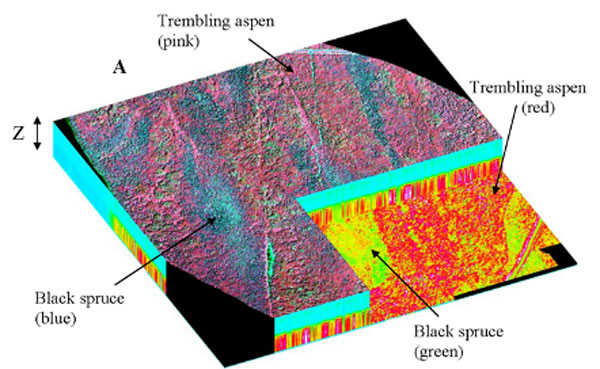Hyperspectral remote sensing
Cutting-Edge Sensor & Technology Applications

Example: Hyperspectral Analysis for Nitrogen Isotope Mapping (L. Lorentz, V. Thomas, and B. Strahm)
IGEP INVESTIGATORS: V. THOMAS AND R. WYNNE
Our hyperspectral research focuses on two main areas, which are often combined:
- the development of algorithms to process and analyze hyperspectral data cubes
- wavelet analysis for LAI
- feature selection/feature extraction
- multivariate analysis
- use of hyperspectral to assess forest physiology at leaf, canopy, and stand levels.
- Foliar biochemistry (chlorophyll, nitrogen, phosphorus, magnesium, calcium, potassium)
- Stress, water content, etc.
- Linkages between physiology and structure (see Data Fusion)
- Photosynthesis parameters
- Nitrogen Isotopes
Global models predict increased nitrogen in the atmosphere, and subsequent deposition onto the land surface, under future scenarios. A better ability to predict the response of ecosystems to this increased exposure to nitrogen is critical for the identification of areas sensitive to global and land use change. The solution requires a new way of thinking and prediction. We propose the fusion of two computational and analytical approaches: hyperspectral remote sensing and stable isotope mapping. Using advanced multivariate statistical approaches and hyperspectral computational algorithms, we will explore the relationships between spectral reflectance (e.g. using hyperspectral imaging at the leaf and landscape scale) to foliar δ15N signatures and other ecosystem properties/processes in order to develop predictive models of N dynamics.


